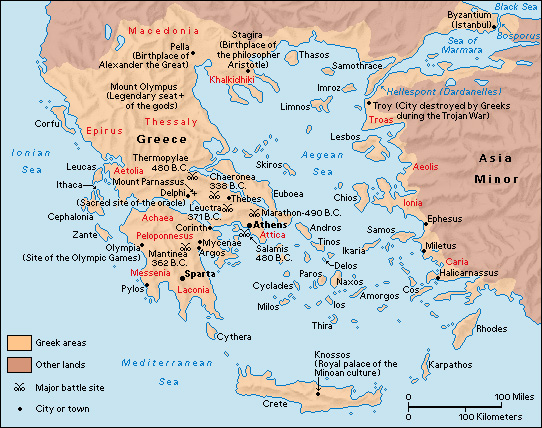Knossos, << kuh NOS uhs or NOS uhs >> also spelled Cnossus, was the chief center of the Minoan civilization, which flourished on Crete and some Aegean Sea islands from about 3000 to 1100 B.C. The culture was named for the legendary King Minos of Crete. Knossos stood on Crete’s north-central coast.

Knossos was first settled about 7000 B.C. The city’s first great palace, built around 2000 B.C., was destroyed by an earthquake in 1700 B.C. A fire that destroyed many towns on Crete damaged a second palace around 1450 B.C. Knossos was the leading Greek city-state on Crete until the Romans conquered the island in 67 B.C. It continued as an important state until the A.D. 300’s. In 1900, Sir Arthur Evans, a British archaeologist, began the excavation of the palace at Knossos. His work added much new information about the Aegean area’s Bronze Age.

